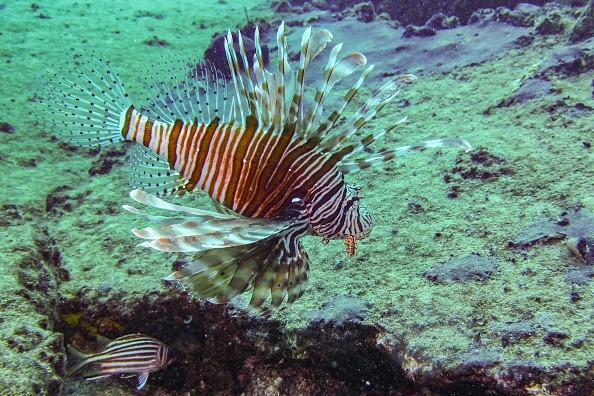By any definition, the Deepwater sculpin is an unappealing fish. It's not going to be engraved on a plaque or cast in a Disney film.
What you may call the bottom-dweller is a survivor, having managed to live at the bottom of Canada's deepest and coldest lakes since the last ice age.
Researchers are currently sequencing its complete genome to see how this seemingly ordinary fish has adapted to such harsh surroundings.
The appearance of Deepwater sculpin in deep waters in Canada
 (Photo : IBRAHIM CHALHOUB/AFP via Getty Images)
(Photo : IBRAHIM CHALHOUB/AFP via Getty Images)

It's an iconic Canadian survivor, says Nathan Lovejoy, a biology professor whose team is conducting genetic research on the sculpin with the help of a CanSeq150 grant, as per ScienceDaily.
We don't know much about this little, modest fish that has survived in these extremely harsh settings, especially how it has been able to adapt over time.
Deepwater sculpins dwell nearly entirely in lakes with depths higher than 35 meters and temperatures below 8 degrees Celsius.
Its range spans northwest from the Laurentian Great Lakes and the Gatineau area of Quebec to Great Slave and Great Bear Lake in the Northwest Territories, via the deepest lakes of Ontario, Manitoba, and Saskatchewan.
Physically, it is long and flat, with two little black eyes on top of its head. Adults are tiny, often measuring 10-15 cm (4-6 inches) in length and weighing less than 25g (less than one ounce).
Despite its unassuming look, the sculpin serves a vital part in the Great Lakes food chain, linking the tiny crustaceans and water insects it feeds on to the lake trout and larger predatory fish that hunt on the sculpin.
At the same time, Lovejoy claims that because it dwells at such depths, it is still an understudied fish, with little known about its biology and genetics.
The fourhorn sculpin, an arctic ocean fish living in shallow seas, is the deepwater sculpin's closest cousin.
According to Lovejoy, the deepwater sculpin evolved when expanding glaciers forced the ancient fourhorn sculpin into continental freshwater environments. They progressively acclimated to these watery circumstances throughout time.
Read more: New Fish Species Discovered in Western US Rivers
What are these creatures?
The Deepwater Sculpin appears to dwell towards the bottom of deep oligotrophic glacial lakes, although habitat descriptions are restricted due to the difficulties of capture or detection; the record depth in both Great Bear Lake and Lake Superior is roughly 366 m (1200 ft), as per Field Guide.
During the summer, all lakes surveyed in 2004 had relatively low nutrient contents and biological production rates, maximum water depths above 35 m (115 ft), and benthic water temperatures below 8 C.
The Deepwater Sculpin lives on the bottoms of deep lakes and provides food for lake trout, burbot, and other cold-water piscivores.
It feeds on deepwater crustaceans and chironomid larvae.
Deepwater and Spoonhead Sculpins were never seen together in the same lake in a 2004 survey of 35 lakes across their range, implying rivalry between these two species.
Deepwater Sculpin accounts for 30% of fish biomass collected in bottom trawls in Lake Michigan. Sculpin energy density decreased in Lake Michigan when Diporeia prey was reduced.
Two Deepwater Sculpins were caught in Upper Waterton Lake in August 1966, and 28 were caught between May and October 2004 using benthic fish traps, gill nets, and otter trawls; the lake's population number is unknown.
Related article: Blobfish Isn't Actually World's Ugliest Animal: 10 Facts About This Deep-Sea Creature
© 2024 NatureWorldNews.com All rights reserved. Do not reproduce without permission.


![Climate Change is Reducing Dust Levels Worldwide as Arctic Temperature Warms [Study]](https://1471793142.rsc.cdn77.org/data/thumbs/full/70320/280/157/50/40/climate-change-is-reducing-dust-levels-worldwide-as-arctic-temperature-warms-study.jpg)

![Tsunami Hazard Zones: New US Map Shows Places at Risk of Flooding and Tsunamis Amid Rising Sea Levels [NOAA]](https://1471793142.rsc.cdn77.org/data/thumbs/full/70325/280/157/50/40/tsunami-hazard-zones-new-us-map-shows-places-at-risk-of-flooding-and-tsunamis-amid-rising-sea-levels-noaa.jpg)
